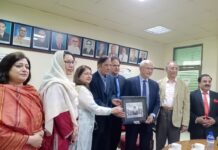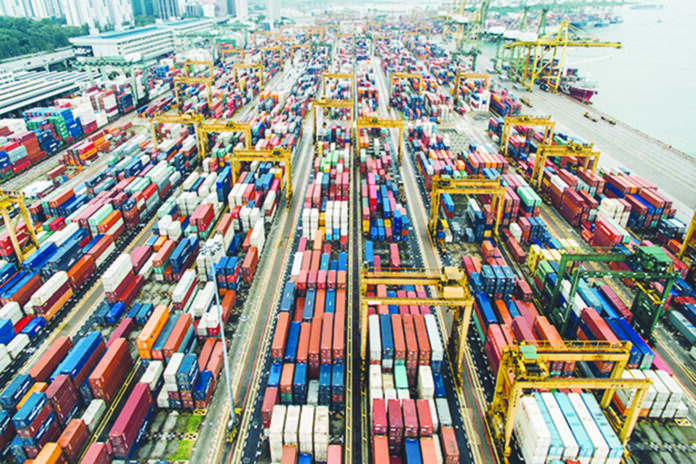Pakistan boasts a superb strategic location at the crossroads of Asia. Historically, its economic woes have been likened to Turkey’s, earning it the harsh moniker “Sick Man of Asia.” Pakistan’s persistent issues require a close examination at a time when the Asian economy is growing stronger. Understanding the gravity of the current economic crisis in Pakistan requires a look back in time. There has been a tendency to prioritize short-term gains above long-term economic progress as a result of the country’s tumultuous political history, which military interventions, unpredictable economic policies, and a volatile democratic landscape have distinguished. This convoluted history provides context for understanding current issues.
Pakistan’s economic status in the international community has risen and fallen throughout history. The “Sick Man of Asia” label it’s been given in recent years doesn’t have to stick around for good. Pakistan may learn from the extensive research and data-driven insights that can help it succeed in the dynamic Asian economy. Pakistan’s underinvestment, especially in technology, significantly contributes to the country’s economic woes. Recent statistics show that the government needs help conducting R&D and developing new ideas. Research and development spending in Pakistan is a worryingly low 0.29 percent of GDP, well below global and regional standards. The tiny number of research universities and institutions compounds the effects of the country’s dismal investment in innovation. There is also a need for more participation in R&D from the commercial sector. Companies invest a negligible portion of their profits in these kinds of things. This contrasts with countries like South Korea and Singapore, which have robust innovation ecosystems in which substantial private-sector funding supports technological innovation and economic expansion.
Since technology exports only account for a fraction of Pakistan’s economic potential, its success in these areas is evidence that its technology has stopped. As a result, Pakistan’s economic competitiveness needs to improve due to insufficient support. Regarding innovation and adoption of new technologies, Pakistan routinely ranks lower in the World Economic Forum’s Global Competitiveness Report. This hinders Pakistan’s ability to entice FDI and foster long-term economic progress.
Let’s lighten the complex geopolitical issues that significantly impact Pakistan’s economy. The economic relationship between Pakistan and India has been negatively affected due to the continued tensions between the two countries over the Kashmir dispute. The statistics show a steep decline in commerce between the two countries, suggesting lost economic prospects. The $1 billion trade volume in 2020–2021 represented a fraction of the potential between the two countries. Pakistan’s textiles, agricultural, and manufacturing sectors suffer due to the constrained commerce resulting from the heightened tensions with India. Problems stemming from shifts in regional geopolitics extend beyond the commercial sphere. They impact the business climate, foreign investment, and the ease of doing business. Pakistan must learn to swim across these turbulent geopolitical waters to take advantage of its strategic location and realize its economic potential.
Pakistan’s water crisis is a pressing issue that has received less attention than the country’s energy transformation. According to the data compiled by the Pakistan Council of Research in Water Resources, the government is heading toward a water problem that might hurt agriculture, a significant contributor to the country’s gross domestic product. Pakistan is rapidly approaching a state of water stress, and severe water scarcity is imminent. The country’s agricultural output is threatened, and millions of people’s food security and standard of living are at stake if nothing is done.
The rising youth unemployment rate is particularly concerning in light of the persistence of demographic challenges. According to the statistics from the Pakistan Bureau of Statistics, young unemployment—defined as anyone between the ages of 15 and 24—is at 9.8 percent; it’s nearly twice as high as the national average. The persons in this group are both an asset and a potential liability. The economic growth potential of this youthful population can be wasted if they are not given employment and the training they need to succeed in a rapidly evolving labour market.
Pakistan can alter the course of its economic history by fostering innovation, encouraging regional collaboration, addressing water scarcity sustainably, capitalizing on the country’s enormous youth population, and moving toward economic integration. If Pakistan takes these recommendations seriously and plans forward, it can shed its “sick man” label and emerge as a significant economic force in Asia. By taking this step.
Pakistan’s economic problems, which have earned it the nickname “Sick Man of Asia,” may appear severe at first glance. However, beneath these difficulties lie openings for improvement. While Pakistan has yet to invest nearly enough in R&D, this could be the beginning of a thriving tech scene. Pakistan has a large population of young people interested in and skilled in technology. The geopolitical conflicts that have hampered commerce might be transformed into opportunities for regional collaboration and economic integration, through which diplomatic dialogue and cross-border trade could lead to new markets and economic opportunities.
The impending water problem is dangerous, and to combat it, we must develop long-term strategies for water management and disseminate our expertise to regions with limited water resources. Taking advantage of the demographic dividend requires the creation of youth employment initiatives that provide training and education for entry-level positions. Pakistan has to actively participate in regional economic union programs to expand its economy and trade with more nations.
Establishing tech incubators and other startup support systems may foster a vibrant startup ecosystem, attracting investors from inside and outside the country. There has to be more variety in exports, particularly in emerging fields like IT and renewable energy. Investing in education and economic growth is essential for ensuring a trained workforce that can adapt to the market’s demands.
Pakistan is at a crossroads economically, and the country is facing significant challenges that have earned it the label “Sick Man of Asia.” But underlying these difficulties are openings for improvement. Pakistan can alter the course of its economic history by fostering innovation, encouraging regional collaboration, addressing water scarcity sustainably, capitalizing on the country’s enormous youth population, and moving toward economic integration. If Pakistan takes these recommendations seriously and plans forward, it can shed its “sick man” label and emerge as a significant economic force in Asia. By taking this step.






















